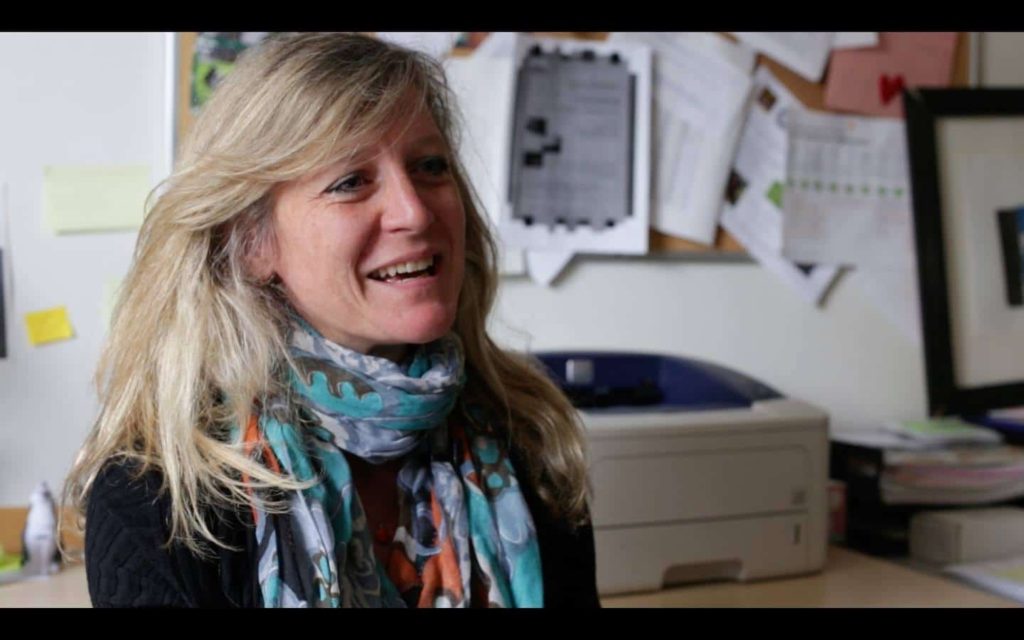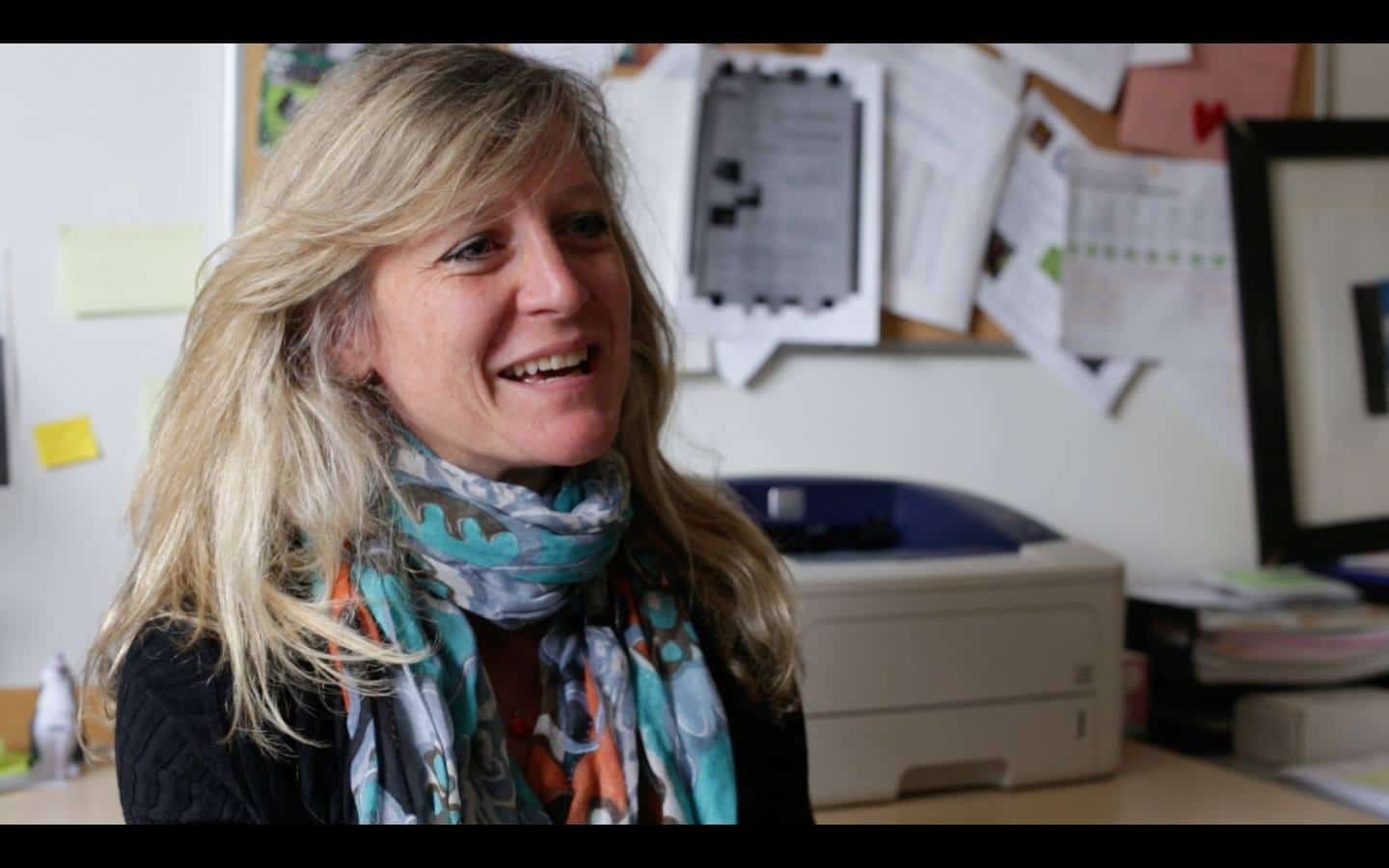
Good Shepherd Services is an organization that helps a lot of young people in Red Hook through various programs today, but it has a history that goes all the way back to the 1940s.
The Good Shepherd Services that has a focus on Red Hook as well as the rest of the city was initially incorporated in 1947. It was started as a residential care program for young women in the city.
“Basically around 1947, we started in New York City with residential programs for young women and within that we were also helping them move forward with their education and then also gain skills,” said Rachel Forsyth, who is the senior division director for partnership schools at Good Shepherd. “At that time it was learning how to sew and do other things that would eventually help lead them to get a job and be a productive member of society.”
Good Shepherd still does residential programming even though that is not what they are known for. They have two centers in Manhattan that serve as transitional living programs.
Individuals can live in these centers for up to two years. These centers are designed for people who are homeless or have aged out of foster care.
This organization concentrated exclusively on young women until the 1980s. However, they then found a need to help a different segment of the population in the form of young people who have dropped out of high school. This was their link to Red Hook.
Their mission has now changed to helping young people with after school programs and transition high schools for people who had dropped out of their previous school. They started South Brooklyn Community High School, which is a second opportunity school in Red Hook.
“We really want to be able to see young people where they are at and help them whether that is in school or in life in general,” Forsyth said. “We have multiple different programs that work to help young people and families from a development point of view.”
In the 1980s, they realized there was an issue with young people not being in high school so they started getting into high schools to work with kids who were not attending school.
This was Good Shepherd’s first connection to Red Hook since one of the first schools they worked with was John Jay High School in Park Slope, and many of the kids who had dropped out of John Jay lived in Red Hook.
“In the 1980s, we were doing dropout prevention work at John Jay, and what we were learning back then was that a lot of the young people who were struggling to attend and dropping out actually lived in Red Hook,” Forsyth said. “We worked with John Jay back then to identify a couple of teachers and we located the program in Red Hook to be closer to where the families were and to be able to offer classes off site.”
The classes for dropouts back then were in the basement of the Miccio Community Center. They decided to bring the program directly to the Red Hook youth.
South Brooklyn Community High School, which is now on Connover Street as a transfer high school, existed as a program back then but didn’t have the name South Brooklyn.
In the 1980s, the program was more of an extension of John Jay High School. The school was called BASIS and more recently Good Shepherd was jointly asked to apply with the department of education to use the 21st century foundation money to create a free standing high school working with the population that they were serving.
In the year 2000, Good Shepherd successfully applied to the New York City Department of Education to open a free-standing high school, which is what became South Brooklyn Community High School. There are currently 193 students enrolled at the school, and it is still operated in partnership between Good Shepherd and the Department of Education.
South Brooklyn High, which is technically a transfer high school, eventually opened in 2002.
“There are several transfer high schools in NYC, but South Brooklyn, that model of bringing together the Department of Education with a community based organization, that was an innovative idea,” Forsyth added.
Each of the transfer schools in Brooklyn has an internship coordinator who works with students to find out what their interests are and what field they think they would be interested in.
At South Brooklyn and the other schools, they work with employers in the neighborhood who take in high school students as interns and in the process grow and develop that young person.
“We have a lot of interesting internship programs,” Forsyth added. “We have kids who have done internships at Miccio and at Beam Center. We have kids who have interned there and then they turn around what they learned at the Beam and they are able to go into some of the elementary schools and teach kids the skills that they learn.”
This year, at the Beam Center, the focus was on aquatic stewardship and they learned about the water system in our community and what they can do to be mindful. Forsyth thinks that it’s great to see high school kids involved in that.
The Good Shepherd director went on to add more about the mission of Good Shepherd.
“The idea was to combine the instructional expertise with the Department of Education with the youth development expertise of Good Shepherd Services to bring both powers to bear for our students and to help them move forward.
Good Shepherd gets its funding for the programs that they facilitate through a variety of sources. Most of it is actually city money.
“We have the Beacon program at PS 15, which also has an after school program at PS 276 and there is an after school program at Miccio Center,” Forsyth said.
The Beacon program is unique because they organize after school and weekend activities for the community at various schools.
“For South Brooklyn High, it is a combination of Learning to Work, which is the funding stream that allows for the community organizations to partner with the Department of Education,” Forsyth said. “We also raise money privately through the Robin Hood Foundation.”
They have after school programs are funded through 21st century money. They also have a prevention program in various school with social workers that is funded through ACS. According to Forsyth, they bring several funding streams together to provide services for the community.
In Brooklyn and the Bronx they have created a program called Life Link, which is a bridge to college program for young people who graduated out of their high school program and who are going to CUNY. They have a team of counselors who will work with them to help make that transition successfully.
Good Shepherd also sponsors a program called Rebound at the Miccio Center that has happened for the last few years. This is for young people ages 18-24 who aren’t in school and are trying to figure out what their next step will be.
This program uses basketball as a tool but also teaches skill development to go with an employability readiness program for the young adults. They have an internship coordinator to help find internship/job placements when the course ends.
“A lot of these programs have interconnected staff,” Forsyth said. “Mark McCasskill is running Rebound but he used to be the internship coordinator at our school in East New York.”
They are in the process of opening a community center with similar services to what they have in the Miccio in Red Hook but this one will be in East New York in a new building.
Good Shepherd partners with a lot of community organizations in Red Hook to further impact the area.
One venue that they have worked with is the Red Hook Community Justice Center. They have a GED program that Good Shepherd has referred people to, and they also partner together on other programs.
Red Hook Initiative and Dance Theatre Etcetera work with South Brooklyn High each summer to run a program called Digital Boot Camp. It’s a program for kids from the high school or just from the neighborhood.
“They work in small teams of four or five and learn all aspects of digitally telling a story,” Forsyth added. “They do a PSA for different businesses in the neighborhood. They have highlighted Steve’s Key Lime Pie, and they did a video on a woman owned kickboxing studio.” (They have also profiled other businesses)
They would ask the various business owners about the business and the location. They learn technical aspects of making a video, and at the end their work is shown at the Cobble Hill Theatre for all to see and enjoy. According to Forsyth, they get the red carpet treatment.









